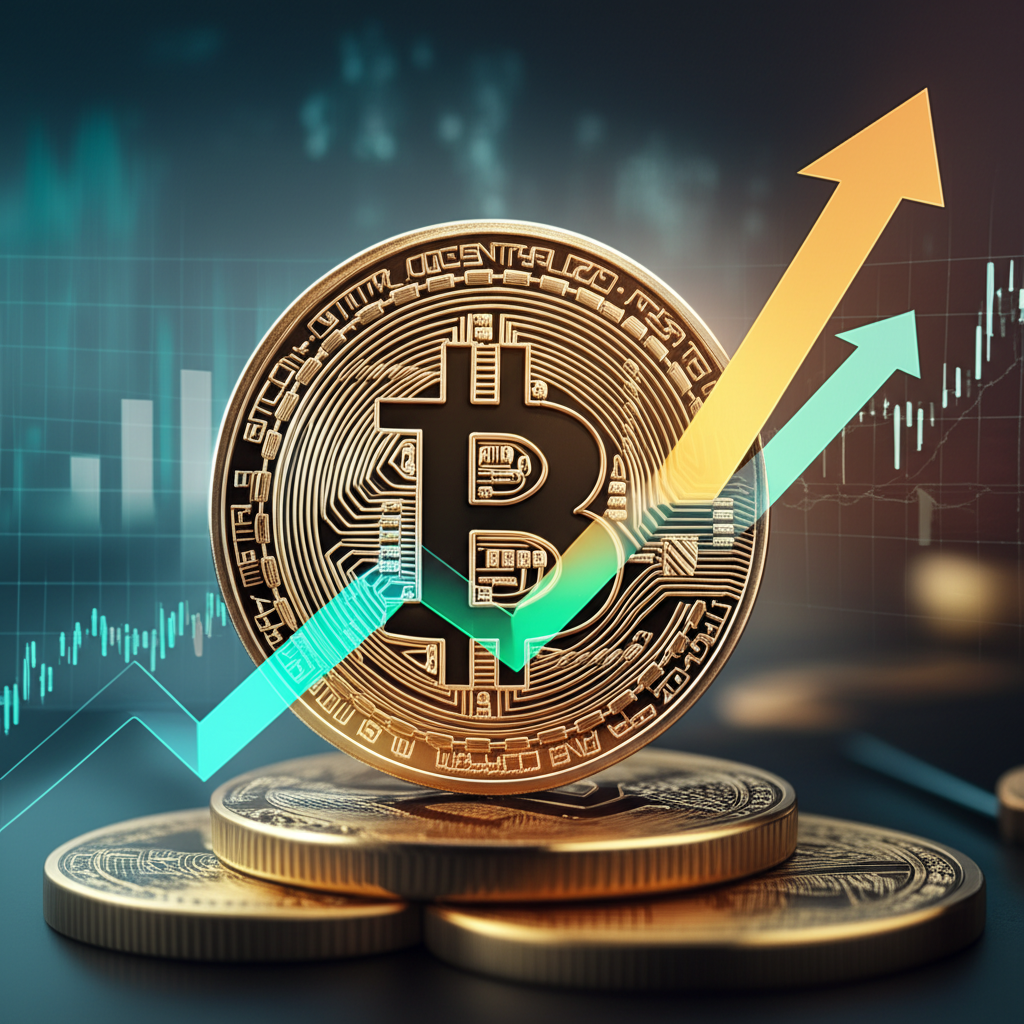Navigating the Influence of Institutional Capital and Emerging Trends
The cryptocurrency market continues its fascinating dance, increasingly swayed by the ebb and flow of institutional capital through Bitcoin Spot Exchange-Traded Funds (ETFs). While Bitcoin consolidates its position as a digital anchor, smart contract platforms like Ethereum are forging ahead with crucial upgrades, and a diverse array of altcoins demonstrate remarkable resilience. This evolving landscape demands a keen eye on both macro trends and nuanced developments.
The ETF Juggernaut and Bitcoin’s Price Anchor
Recent weeks have underscored the profound impact of Bitcoin Spot ETFs on the broader crypto market. After an initial surge and subsequent consolidation, these investment vehicles have witnessed renewed net inflows, signalling persistent institutional interest. Giants like BlackRock’s IBIT and Fidelity’s FBTC continue to accumulate substantial amounts of BTC, often offsetting moderated outflows from Grayscale’s converted GBTC. This steady absorption of supply by regulated investment products has been a critical factor in Bitcoin’s ability to hold key support levels and maintain its position above critical psychological thresholds. The consistent demand from these ETFs is solidifying Bitcoin’s role as a digital store of value and increasingly, an accessible asset class for traditional finance. This institutional embrace lends credibility and liquidity to the market, influencing not just Bitcoin’s direct price action but also setting a precedent for other digital assets vying for similar investment product status.
Ethereum’s Post-Dencun Evolution and ETF Aspirations
Beyond Bitcoin, Ethereum continues to be a focal point of innovation and market speculation. The successful implementation of the Dencun upgrade has been a significant milestone, dramatically reducing transaction costs (gas fees) on Layer 2 networks by introducing ‘blobs.’ This improvement is crucial for scaling Ethereum and making decentralized applications (dApps) more economically viable for everyday users. As a result, Layer 2 solutions like Arbitrum, Optimism, and Polygon are experiencing increased activity, fostering a more robust and accessible ecosystem. Crucially, attention is now firmly fixed on the potential approval of an Ethereum Spot ETF. While the timeline remains uncertain, the anticipation alone is a significant driver of ETH’s price performance. A successful ETH ETF launch could unlock a new wave of institutional capital, mirroring Bitcoin’s journey and further cementing Ethereum’s status as a foundational pillar of the decentralized web.
Altcoin Resilience Amidst Dominance Shifts
While Bitcoin and Ethereum often command headlines, the broader altcoin market exhibits a fascinating mix of independent strength and correlation. Many altcoins have demonstrated impressive resilience, with select projects carving out significant gains based on unique narratives and technological advancements. Themes like Artificial Intelligence (AI), Decentralized Physical Infrastructure Networks (DePIN), and new Layer 1 and Layer 2 solutions continue to attract investor interest. Projects within these sectors, offering tangible utility or innovative scaling solutions, are seeing capital rotation as investors seek higher alpha. However, the altcoin market remains highly volatile and susceptible to shifts in Bitcoin’s dominance. A strong Bitcoin rally can sometimes pull capital away from altcoins, while periods of Bitcoin consolidation can create opportunities for altcoins to shine. This dynamic interplay requires careful analysis, as specific ecosystem developments and community strength often dictate individual altcoin performance in this evolving landscape.
Regulatory Sands and Market Uncertainty
The global regulatory landscape for cryptocurrencies remains a complex and evolving narrative, directly influencing institutional adoption and market sentiment. In the United States, ongoing discussions and the cautious approach of bodies like the SEC continue to shape how digital assets are classified and traded. While the approval of Bitcoin ETFs was a landmark, clarity on stablecoin regulations and broader frameworks for other cryptocurrencies is still awaited. Internationally, jurisdictions are adopting varied approaches, with some embracing crypto innovation through clear licensing regimes, while others maintain stricter oversight. This regulatory uncertainty creates both challenges and opportunities. For institutions, a lack of comprehensive guidelines can deter larger investments, yet progress towards clearer frameworks, even if slow, is seen as a positive step towards mainstream acceptance. Investors are closely watching these developments, understanding that regulatory clarity is paramount for the long-term stability and growth of the digital asset economy.
Investor Sentiment: Cautionary Optimism and Future Outlook
Current investor sentiment in the crypto market can best be described as cautiously optimistic. While institutional participation is steadily growing, indicating long-term confidence in digital assets, retail enthusiasm, though present, has not yet reached the euphoric levels seen in previous bull runs. Macroeconomic factors continue to play a significant role. Inflation data, central bank interest rate decisions, and geopolitical events all exert influence on risk appetite across global markets, including crypto. As the year progresses, market participants are keenly observing these indicators. The confluence of sustained ETF inflows, technological advancements on key blockchains, and the potential for further regulatory clarity could pave the way for continued growth. However, the inherent volatility of the asset class dictates that investors remain vigilant, adapting their strategies to both macro shifts and specific project developments.
Conclusion
The cryptocurrency market stands at a pivotal juncture, profoundly shaped by the increasing influence of institutional capital flowing into Bitcoin Spot ETFs. This trend, coupled with significant technological strides like Ethereum’s Dencun upgrade, highlights a maturing ecosystem. While altcoins navigate their own paths of innovation and market specificities, the overarching narrative remains one of evolving adoption and regulatory integration. For investors, understanding these intertwined dynamics, from institutional demand to fundamental network improvements, is crucial for navigating this complex yet opportunity-rich digital asset landscape. Vigilance and adaptability remain key.

